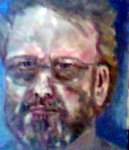Two colleagues (Lucien Benguigui, our PhD student Rafi Roth) and I just completed a major study concerned with the evolution of high-rise buildings in Tel Aviv. We conducted empirical analyses of the temporal and spatial evolution of the city in 3D and we built corresponding cellular automaton (CA) simulation models.
Until some 15 years ago economists were satisfied with observing cities through a prism of stylized facts and the Alonso type mono-centric urban model. The recognition of the existence of "edge cities" led to models with multiple centers. Both types of models suggest that high-rise buildings tend to cluster in space.
In our study clusters are defined as spatially continuous concentrations of buildings of pre-defined heights. We succeeded to generate 3D clusters by means of our cellular automaton model. The rules of behavior are relatively simple and have an economic intuition. More recently we attempted to identify empirically clusters of high-rise building in Tel Aviv over time with the help of GIS.
The results are interesting. The frequency distribution of building heights displays twin peaks. More, interesting, using a variety of measures we identified clusters already in the 1970s. However, over time the clusters tend to weaken.
These days we parade our results at various conferences.
Until some 15 years ago economists were satisfied with observing cities through a prism of stylized facts and the Alonso type mono-centric urban model. The recognition of the existence of "edge cities" led to models with multiple centers. Both types of models suggest that high-rise buildings tend to cluster in space.
In our study clusters are defined as spatially continuous concentrations of buildings of pre-defined heights. We succeeded to generate 3D clusters by means of our cellular automaton model. The rules of behavior are relatively simple and have an economic intuition. More recently we attempted to identify empirically clusters of high-rise building in Tel Aviv over time with the help of GIS.
The results are interesting. The frequency distribution of building heights displays twin peaks. More, interesting, using a variety of measures we identified clusters already in the 1970s. However, over time the clusters tend to weaken.
These days we parade our results at various conferences.
Figure 1 Distribution of heights in Tel Aviv 2003

Figure 2 Distribution of heights of high buildings in Tel Aviv 2003 with exponential fit



No comments:
Post a Comment